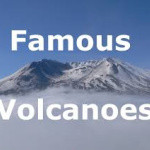Category: Geography
Created by: farooq92
Number of Blossarys: 47
The eruption was small — in volcanic terms, that is — producing only about 3% of the ash ejected by Mount St. Helens in 1980. Instead, it was the mudflows that made Colombia's 1985 Nevado del Ruiz explosion the second deadliest in the 20th century and the fourth deadliest in recorded history. The volcano has been blowing its top since the Pleistocene era and has erupted three times in modern history, including in 1595 and 1845. But on Nov. 13, 1985, a relatively small explosion unleashed floods that swept away 1,500 people on one side of the mountain. On the other side was the town of Armero, the site of the worst destruction. 25-m.p.h. lahars (volcanic mudflows) obliterated the town and blanketed it in gray muck. When the landslides subsided, 23,000 people had died and damage was estimated at $1 billion — one-fifth of Colombia's GNP at the time.
Izvirdums bija neliels — vulkāna izteiksmē, tas ir — ražo tikai apmēram 3 % pelnu izstumts, Mount St Helens 1980. gadā. Tā vietā, tas bija nogruvumi, kas padarīja Kolumbija ' s 1985 Nevado del Ruiz eksplozijas otrais deadliest 20. gs. un ceturtais deadliest jo ierakstīts vēsturē. Vulkāns ir pūš tās augstākā kopš pleistocēna ēras, un trīs reizes ir izcēlās ar mūsdienu vēsturi, tai skaitā 1595 un 1845. Bet par Nov 13, 1985, salīdzinoši mazs sprādziens unleashed plūdi, kas nes prom 1500 cilvēki vienā pusē kalnu. Otrā pusē bija Armero pilsētu sliktākajiem iznīcināšanas vietu. 25 m.p.h. lahars (vulkāna nogruvumi) izdzēsa pilsētu un blanketed to pelēko mēslu. Zemes nogruvumi norima, 23.000 cilvēki nomira, un kaitējums tika lēsts $1 miljardu — viena piektā daļa no Kolumbijas ' s NKP tajā laikā.


 English (EN)
English (EN)